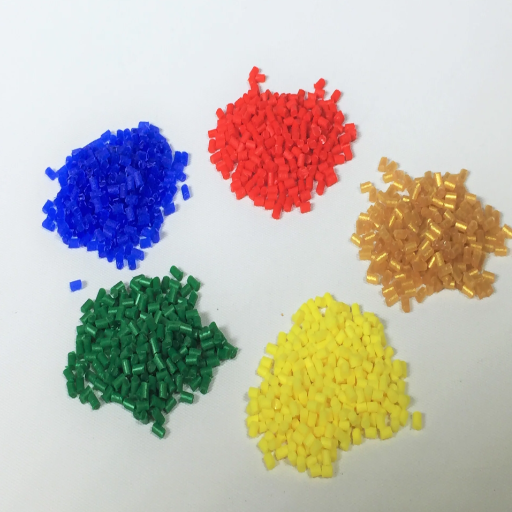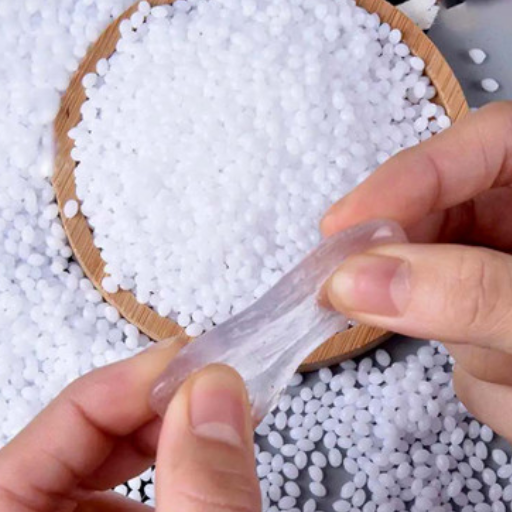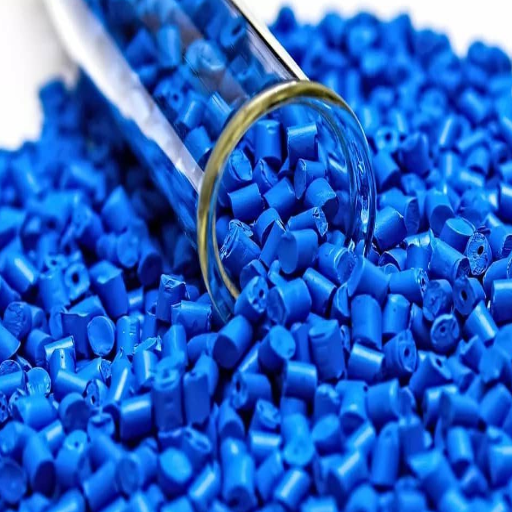The acrylonitrile butadiene styrene (ABS) pellets has now found a prominent use within the DIY community and manufacturing due to its remarkable versatility and vigorous characteristics. Due to their high strength and impact restriction properties, ABS polymers are implemented in various applications from 3D printing to molding. This article reveals the technical benefits of ABS as a professional plastic, discusses its application in various DIY projects, and provides useful information on how this material will serve you in all your dealing’s functional and creative aspects, capturing your attention. Regardless of the level of exposure you have had with ABS pellets, whether a master maker or a hobbyist, coming across how to exploit ABS can greatly improve the type and the quality of your projects.
What are ABS pellets and how are they used?
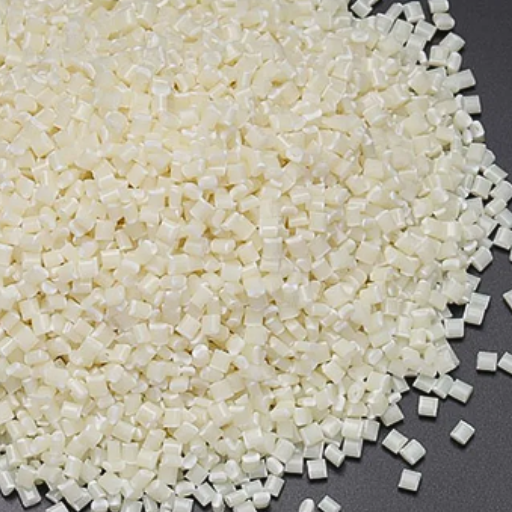
ABS pellets are small and uniform granules which are derived from Acrylonitrile Butadiene Styrene, which is a thermoplastic polymer material that possesses a good degree of impact strength, flexibility, and stiffness. These pellets are most often used to create parts and products when subjected to melting and forming processes such as injection molding, extrusion, and 3D printing. Their common uses are found in automotive industry parts, consumer products, and even prototypes, as they offer a reasonable degree of stiffness combined with ease of processing.
What is ABS plastic made out of
According to its name, ABS plastic material’s basic structure is based on three monomers, namely, its loading factor being acrylonitrile, butadiene, and styrene which all are crucial in determining the material properties of ABS. This first monomer, acrylonitrile, allows the material to withstand heat and is also foreseen to improve contact with some chemical substances; it increases overall stiffness. The other mentioned polymer, butadiene, mainly provides the material with impact resistance and enhances its overall toughness. Finally, the last monomer in this formulation, styrene, ensures that the polymer can be molded and provides the material with a gloss finish. The usual mix consists of 15-35% of acrylonitrile, 5-30% of butadiene, and 40-60% styrene; however, there are instances where the figure might not be the same as they are adapted for certain purposes.
Some important characteristics of ABS are its melting point, which lies between 200 and 250°C, density, which is around 1.02-1.06 g/cm³, and tensile strength, which varies between 40 MPa and 60 MPa depending on the available grade. Moreover, ABS is manufactured with a flexural modulus between 1,800 and 2,400 MPa and can work in the temperature range of -20°C to 80°C. These parameters justify its versatility across industries, allowing it to maintain performance in various mechanical and environmental conditions.
Uses of ABS Pellets
- Automotive Components: Due to the impact-resistant and thermally stable components that are manufactured from ABS pellets, they are widely used in the automotive industry for various applications such as dashboard panels, interior trim, and exterior grilles while still looking good thanks to its aesthetic designs.
- Consumer Electronics: ABS is widely used in the making of casings for TVs, computer monitors, and keyboards due to its high processibility and glossiness. Its insulation properties also increase its use and safety in electronics.
- Household Appliances: ABS is the widespread material for vacuum cleaners, kitchen items, and refrigerator liners. Its great structural strength and chemical resistance make it perfect for everyday use, as it is highly durable and reliable.
- Construction and Plumbing: ABS is used in construction elements, joints, and piping systems. It is renowned for its resilience and resistance to weather. The material is quite effective in harsh working conditions, as it can resist stress and cryogenic temperature.
- Toys and Recreational Products: Considering its net weight, ABS is utilized in creating nontoxic toys and leisure products such as Lego bricks. It allows for easy molds and ensures safety and longevity of use by numerous consumers.
- 3D Printing Filaments: ABS is capable of easy extrusion and shaping, so a broad range of 3D printing filaments is manufactured using it. It is particularly effective in the development of functional prototypes and durable parts due to its strength and heat-resisting characteristics.
- Medical Devices: ABS possesses rigid characteristics and can withstand sterilization which helps in making non sterile medical devices, such as parts of inhalers, models of anatomy or cases for medical equipment, with certain grades of the material.
Advantages of using DIY projects with ABS pellets
The most notable benefits of using ABS pellets for DIY projects are the tensile strength, flexibility, and the possibility of manipulating them with ease. They are light in weight but strong, so they can be utilized to create strong and useful parts. The reinforcement offered by their impact resistance allows for valid results in even high-force applications. This also provides a good reproduction rate as the materials used are moldable. Moreover, the materials used resist harsh environments and degradation. Such characteristics make the use of ABS pellets suitable for many creative and useful DIY projects.
How do I choose the right ABS pellets for my project?
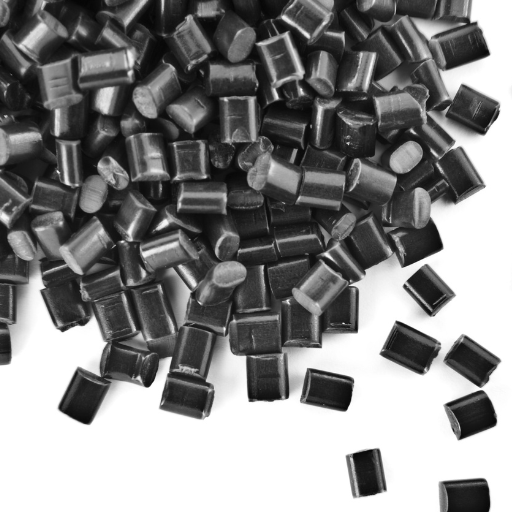
Selecting proper ABS pellets for your project requires thinking about several important aspects. The first thing to assess is the intended use of your project, for instance, the required strength, flexibility, or heat resistance. There are several grades of ABS pellets, however, including general purpose, high impact, and flame retarded types each of which has a different purpose. Furthermore, the heat, moisture, or chemicals the material will be subjected to will be determined to confirm the suitability of the ABS ion pellets. Furthermore, consider the type of processing that you will apply – whether it will be injection molding or 3D printing, so that you can pick pellets with a proper melt flow index. Finally, make sure that the aesthetic requirements, such as the color or the product’s surface, have been considered, as plenty of ABS pellets are available with several design options.
Factors to consider when selecting ABS pellets
- Mechanical Properties: Identify your project’s exact mechanical properties, such as impact resistance, tensile strength, and flexibility. High-impact grades are designed to withstand a great deal of abuse, while general-purpose grades will do nicely when demands are not that great.
- Heat Resistance: What is the temperature range likely to be encountered for your application? Some ABS pellets are resilient and able to perform in high-temperature environment where thermal stability is critical.
- Processing Method Compatibility: Ensuring the pellets’ melt flow index matches the requirements of your manufacturing process is necessary for proper processing, be it injection molding, extrusion, or 3D printing. This guarantees effective work and positive results ensured.
- Chemical Resistance: Anticipate reagents, oils, or other substances that can harm the polymer. Avoid such circumstances by selecting ABS pellets with appropriate formulations.
- Aesthetic Requirements: Pay attention to the product’s color, texture, gloss level, and even post-processed appearance. Some ABS pellets may be used when color-matching or special finishes are needed.
- Regulatory compliance: Remember that if your application is in the medical, food, or safety equipment category, the pellets should correspond to the developed standards and have permissions for use in these industries.
- Environmental Conditions: Assess the moisture, UV, or any other environmental conditions that will be encountered once the product is completed. Formulations with extra stabilizers or coatings are better suited for these conditions.
- Cost-Effectiveness: Research the relationship between price and performance. Specialty grades include enhanced properties but cost more, so choose wisely to stay within budget.
Options of Colors and the Effect They Have on the Final Products
The choice of color options in ABS pellets has a bearing on the final product’s appearance as well as its functionality and branding. Such a color can improve the sale of the product and conform to the brand style. Apart from aesthetic considerations, some color formulations may contain additives to improve UV, thermal or antimicrobial stability, enhancing the ability of this product to perform under different conditions. Custom color matching results in the fulfillment of contract requirements in terms of color matching at all points during production. Also, lightfastness properties and the approval of certain pigments may be important in such applications.
Understanding pellet grades and quality
Several critical factors define the grade and quality of pellets, including the material’s impurity level, melt flow index, and impact value. Having high-purity ABS pellets improves mechanical properties and surface finishing, suggesting that such pellets are used for precise applications, especially in the automotive or electronics parts-making sector. The melt flow index in g/10 min tells us about the viscosity of the materials and how easy it is to process the grade determined by the index; higher numbers means it is easier to work with large MFI materials when it comes to designing thin walls or complex shapes, on the other hand for material that needs increased strength a low-grade MFI is more suitable. Such measures as the IZOD or Charpy impact test, which are done on materials, determine their impact resistance value. In addition to these, some grades also provide better thermal or flame retardant features that correspond to industry requirements, such as UL 94 ratings for fire. This work aims to evaluate such parameters to ensure that the envisaged ABS grade meets the expected outcomes of the particular application.
What are the best techniques for working with ABS pellets?
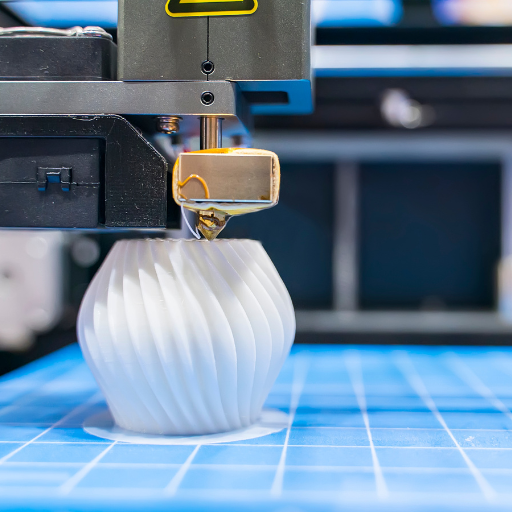
It is important to note that different methods of working with ABS pellets can affect the resultant performance of the material as well as the quality of the product. This is because the first and foremost step deals with the interaction with water, as the water interacts with ABS monomer during molding. As such, it must be maintained at appropriate levels, which should be between 0.1 to 0.02%. Secondly, temperature must be maintained within a range of 210-250 degrees Celsius throughout the process of molding or extrusion due to the effect of the degradation of the ABS polymers. Water, the most common form of an impurity, can be removed, for example, by heating the abrasive polymer for at least 4 hours before starting the molding process. For best results, a Heating temperature of between 80-90 degrees Celsius could be utilized, followed by a cooling period of around 2-4 hours. Moreover, the correct use of equipment and operated methods guarantees effective plasticizing of the polymer blend, aiding smooth flow, which aids in the injection or non-injection molding processes. It is also important to maintain a consistent feed rate throughout the production process and keep heating temperatures that would suit the production,n which can be between 50 and 80 degrees Celsius during the molding process to improve the surface finish of the final product. In summary, users must note that in order to achieve excellent results with ABS pellets, proper regulations which aid the processes mentioned above must be put in place.
Special care and storage options provided for ABS Pellets
I take the necessary precautions and measures I consider critical in handling and storing ABS pellets as I believe they can get moisture absorption, especially because they are hygroscopic. Therefore, I always keep them in cool or dry circumstances. I put these sealed bags in an air-tight container to maintain low humidity. Whenever possible, I do not allow the pellets to be under sunlight or take in high temperatures so they do not get affected. I transport and store the items by keeping them away from dust, oils, and all foreign materials to minimize contamination risks while getting the pellets to storage. By doing this entire process, I am sure that the pellets’ integrity is unaffected and in the best state for any form of processing.
Injection molding and 3D printing technology using ABS pellets
Regarding the use of the ABS pellets, both the injection molding and 3D printing methods have both their advantages and disadvantages. Due to the high precision of the method and its suitability for high-volume production, I would classify injection molding as a high-performance manufacturing technique. I would estimate that this method applies high pressure, high humidity of between 50 and 80 degrees, as well as the requirement of a mix temperature of around 210. I would also estimate this mix temperature can go up to 250 degrees depending on the grade of the ABS polymer. While this machining technique has relatively high tool overhaul expenses, the end result boasts remarkable dimensional stability and an exceptional surface finish.
On the other hand, printing with ABS pellets, which are used in material extrusion systems such as Fused Deposition Modeling (FDM), can be categorized as printing on a much larger scale with more flexibility in the design. ABS can be operated on a wide range of 220-240 degrees with variegated temperature settings from a cold bed to about 90-110 degrees to retain its shape. However, in contrast to injection molding, 3D printing produces a lesser optimized surface quality, a stronger force in the X direction than in the Y direction, and is also time-consuming.
These methods differ based on the purpose and use case, the amount needed to be produced, and the budget that is to be used for the processes. Injection molding works great for mass production of sturdy parts; however, for prototypical designs or parts that require editing and alteration, 3D printing is preferable.
Tips for achieving good results in DIY work
- Know about Material Properties
Be aware of the specific characteristics of the materials in use. For instance, as ABS is prone to warping, it needs to be properly heated and cooled. Therefore, make sure appropriate temperatures and airflow are applied.
- Get Proper Equipment
Always consider getting the right tools and machines for the nature of your work. Quality equipment guarantees efficiency and minimizes the chances of making mistakes or causing defects during 3D modeling, injection work, or mass production.
- Work in an Open-Door Climate
The quality of thermoplastic output can be highly sensitive to temperature and humidity. It’s probably best to work in a controlled environment. Enclosures or heating chambers may also be prudent to maintain better stability during printing and subsequent curing processes.
- Design For The Chosen Method As Well
When 3D modeling, try to think about the production processes you will use for the final product. This means designing the model so as to have as few överhangs as possible to enable the use of fewer supports in 3D Printing. The same applies to injection molding; however, in this case, the application is to reduce features on the model, which may increase production cost and strain.
- Test and Iterate
Conduct small-scale trials before committing to full production. This step allows you to identify potential issues early and refine designs or process parameters for improved final results.
- Always be Safety First
Also, treat any ventilation system with great caution and utmost seriousness. Always have the required safety materials, such as gloves and goggles, for any open chemicals or materials inhibiting harmful fumes, like ABS plastic.
- Routine Updates and Checks
Routine calibration cuts down on errors, provided that routine updates and checks are practiced. For instance, the settings of a 3D Printer have to be calibrated frequently. The same can be said about the settings of injection molders and their equipment when checked between molds.
- Observe the Proper Usage Directions
Be sure to comply with the manufacturer’s directives regarding setting and operating the equipment. Noncompliance may lead to unsatisfactory results or, worse, damage to parts of the printing equipment.
How do ABS pellets compare to other plastic materials?
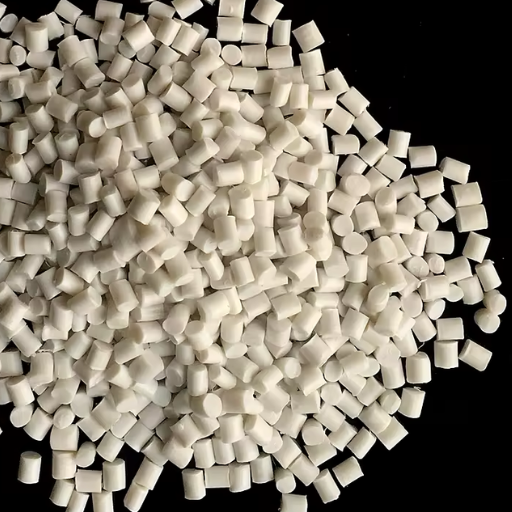
ABS thermoplastic resins are considered one of the plastics with the best impact strength, toughness, and rigidity. Their resilience and thermal insulation properties surpass those of polystyrene, making them useful for parts that undergo stress and have to support a high thermal output. Besides that, its strength and machinability are good enough for most applications, and it is much less expensive than polycarbonate. On the other hand, it is also light in weight. It can be easily processed, which makes it suitable for countless applications, specifically in the automotive industry, consumer goods, and electronics. However, such properties come at a cost, for example, ABS has been noted to have weaker chemical and UV resistance than some alternatives, limiting its chances of use in harsher environments with sunlight exposure.
Is ABS or PLA more good for your application?
3D printing also employs the use of two materials, ABS and PLA, that have different properties, abolishing the two as drastic thermoplastic materials based on case-by-case use. ABS (acrylonitrile butadiene styrene) is also known for its durability, adherent, is heat resistant (up to 105 °C) – thus making it useful in designing nonmechanical stress-absorbing products. Along with its great properties comes the downside of high printing temperatures, the need to use a heated bed, and the printer to be well-ventilated due to the release of fumes.
PLA (polylactic acid) is a reusable material with environmentally friendly characteristics, as it is made from corn starch. It melts between the dead of winter and the summer for normal people, so they do no need to heat up or worry about any wraps. Furthermore, PLA has obvious weaknesses, such as its inability to withstand high temperatures while being very brittle, and that range being roughly sixty degrees centigrade. These qualities are ideal for use in industries where performance isn’t the greatest or used outdoors. However, the PLA then does have its advantages, specifically warping issues.
Heat Management alongside the durability of ABS plastic
The superior performance of extreme stress or lack there of functioning properly at low temperatures makes it ideal for industrial use, from that we can infer that ABS is great for withstanding high temperatures. Installing content in an electric point or just within a truck would be well within the range of slightly above one hundred degrees. That can be ideal for various high-performance uses within a car or numerous other electrical products.
Due to its acrylonitrile, butadiene, and styrene polymer composition, ABS achieves a remarkable degree of toughness and impact strength. Specifically, Acrylonitrile provides chemical and thermal stability while Butadiene enhances the toughness and styrene contributes to rigidity and a smooth finish. This allows the material to bear harsh environments without succumbing to deformation making the material consistent and reliable. However, manufacturers tend to have issues with using aba as it tends to deteriorate when exposed to UV rays unless certain stabilizing measures are employed instead of limiting its bulk use indoors.
Environmental considerations when using ABS pellets
Taking into consideration the aim is to look at the potential effects ABS has on the environment, it is vital to note that ABS is synthesized from fossil fuels and owing to the type of material it ends up being, ABS is nonbiodegradable or degrades at a very slow pace making it difficult to sustain in the long run, exactly why ABS isn’t used on a wide scope. Additionally, the majority of its production comes with a high consumption of energy, which in turn leads to significant releases of gasses that are notorious for contributing to climate change. With that said, it is important to note that ABS can be recycled, and given the number of applications it can fulfill, ABS tends to have a much smaller footprint. However, it is still recommended that less harmful alternatives for some more specific applications be considered to limit the inspections made towards ABS.
Where can I buy high-quality ABS pellets for my projects?
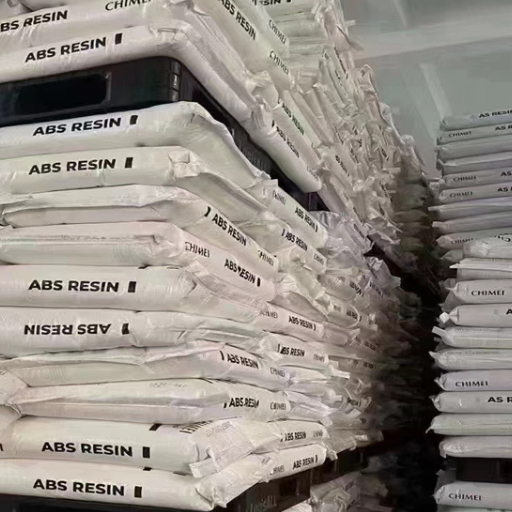
High-quality ABS pellets can be sourced from various suppliers specializing in thermoplastics. Reputable online distributors and marketplaces often provide ABS pellets suitable for industrial and personal projects. Many suppliers offer detailed product specifications, including grade, color, and impact resistance, to help you select the right material. Additionally, manufacturers may provide bulk purchasing options, ensuring cost efficiency for larger projects. Always verify customer reviews and supplier certifications to ensure quality and reliability.
Reliable suppliers of professional-grade ABS pellets
It is important to understand that not every professional supplier selling ABS pellets is reliable. This discrepancy can be fixed by thoroughly analyzing the industry and product offerings of the suppliers. Businesses looking to purchase such products should consider suppliers that deal with a diverse portfolio of pellets, specifically ABS pellets, that encompass accurate, compliant technical specifications for the clients. They have endless detailing on material properties, tensile strength, heat resistance, impact durability, and much more. Many of them also customize their offerings according to the clientele and implement strict quality measurements, ensuring the effectiveness and sound quality of the material. Lastly, businesses that abide by eco-conscious goals should always focus on suppliers providing sustainable services, such as selling recycled services.
How does the the bulk purchasing options influence the costs?
In the case of bulk purchasing, it is mainly the suppliers with volume discontinuities in their prices who deal with such purchase because a larger order is bound to reduce the costs per unit by a wider margin. In wholesale purchase, it is also critical to inspect the basic order volume and freights as they have a huge impact on overall costs. For large-scale projects, I seek suppliers with cost transparency and amendable orders and offer deals for future purchases since the clients can give such orders for an extended period. Furthermore, another factor that is worth considering is whether the supplier has commercially viable prices for certain environmentally friendly and recycled materials to achieve effective cost and green objectives.
How does ABS pellets shipping and transporting work?
In most instances, ABS pellets are first packed in either bulk containers or moisture-resistant bags so they do not get humid, which can weaken the quality and affect shipping and handling. When handled, it is necessary to take proper care of maintaining the cleanliness and dryness of the environment to prevent spoilage or separation of parts as it is necessary during the transportation stage. Tight and secure piles with comprehensible labeling, following specified temperatures and no rising or pushing reduce losses and aid in effective and expedient transportation. In addition, the adherence to set transportation conditions and other safety requirements guarantees that the pellets are delivered in a way that is favorable for them to be engaged in the processing.
What safety precautions should I take when working with ABS pellets?
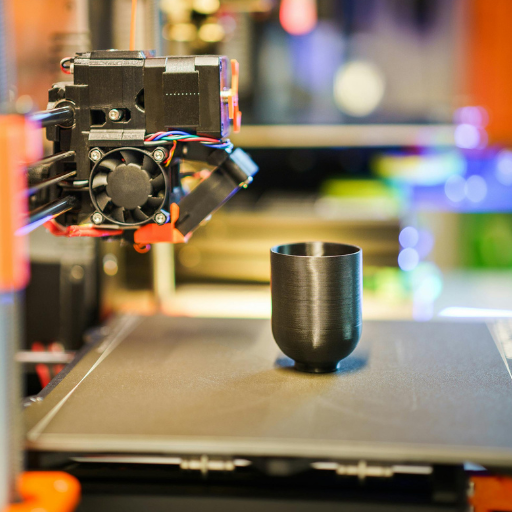
Due to the potential effects on the environmental surrounding areas, the working conditions with ABS safety measures dictate the safety countermeasures for the workers. While accomplishing these, one must utilize appropriate PPE in gloves, safety glasses, and respiratory protection during exposure to processes that produce dust and fumes. I recommend damage avoidance of breathing in ABS dust particles and off-gassing; ensure the processing area and main work area are well-ventilated. To ensure clean working areas, ABS pellets should be moved from the bag in proper and clean working stations to minimize risk of dirtying other manipulation materials and vice versa. It is also part of efficient safety measures to observe proper hygiene measures such as washing hands after carrying ABS pellets, to avoid exposure to chemicals. This is further supplemented by proper pallet placement in ventilation-controlled areas that are clean and free from fire hazards.
Proper ventilation and protectice equipment
To achieve the maximum performance of post-consumer ABS pellets in diverging conditioning, isolation of airborne accepting AV6100 and minimizing risks brought by noxious gases that may form during the heat treatment and or processing of ABS is critical, thus, mechanical extraction ventilation devices such as exhausts or fume hoods that can easily capture and dispose of airborne contaminants should be installed. Furthermore, the importance of correct Personal Protective Equipment (PPE) should not be underestimated. These include gloves to isolate the skin, industrial goggles to avoid airborne particulates getting into the eyes, and specialized industrial respirators to guarantee protection against any fumes and dust inhalation. These efforts are helpful in promoting safety in the workplace.
Fire safety and flame-retardant options
In principle, they represent one of the main fire safety considerations of their work equipment since ABS pellets can be potentially combustible in nature. However, according to industry standard requirements, such materials as ABS can be treated with certain flame-retardant additives. As an example, some ABS materials may contain some brominated or phosphorous-based flame retardants, which can fulfill the requirements of the UL 94 V-0 classifications. As per this classification, such materials may self-extinguish flames within ten seconds without dripping any burning material. Besides, the risk of ignition can be further reduced by controlling the maximum processing temperature to 230°C. Even the storage of such pellets must keep away from open flames or even sources of high heat, and other features such as possessing class A or ABC-rated fire extinguishers do strengthen fire control features. Altogether these factors do help to increase the fire resistance of materials and are consistent with the fire safety standards.
Disposal and recycling of ABS plastic waste
The throws, discards and littering of Acrylonitrile Butadiene Styrene (ABS) substances can be handled efficiently by properly disposing and recycling players. It should be noted that ‘ABS’ tends to be recyclable and can be recycled into new goods of similar quality value. The usual recycling cycle consists of classification, granulation, and remelting of plastics for new use so that soles breathing space is economical of not using too many new materials. Nonetheless, this non-recyclable plastic should have been appropriately removed at the end of life through proper disposal options to save the environment. In the saving theory context, an absolute cutback on using ABS or replacing it with a bio-degradable substitute can reduce waste drastically.
Reference sources
Acrylonitrile butadiene styrene
Frequently Asked Questions (FAQs)
Q: What are ABS plastic pellets and how are they used?
A: ABS plastic pellets are a versatile thermoplastic material used in various applications. They are ideal for injection molding, 3D printing, and other manufacturing processes. DIY enthusiasts and professionals use these pellets to create durable, rigid parts for automotive, industrial, and consumer products.
Q: Are ABS plastic pellets available in different colors?
A: Yes, ABS plastic pellets are available in a range of colors, including black, white, and natural. Black ABS pellets are particularly popular for their sleek appearance and ability to hide imperfections. Natural ABS pellets can be easily colored with additives to achieve custom hues.
Q: What makes these ABS pellets professional-grade?
A: Professional-grade ABS pellets offer high quality and consistent performance. They provide excellent dimensional stability, high impact strength, and good surface finish. These pellets are carefully formulated to meet industry standards and are ideal for creating professional molded products.
Q: How much do ABS plastic pellets typically weigh per package?
A: ABS plastic pellets are often sold in various quantities. A common package size is 2.2 lbs (1 kg). Larger quantities, such as 22 lbs (10 kg) boxes, are also available for those requiring more material. The packaging usually includes a desiccant to keep the pellets dry during storage.
Q: Can ABS plastic pellets be used for making toys or Lego-like bricks?
A: Yes, ABS plastic pellets are excellent for creating toys and Lego-like bricks. The material’s durability, impact resistance, and non-toxic nature make it suitable for toy manufacturing. However, always ensure proper molding techniques and safety standards are followed when creating items for children.
Q: What is the melting temperature for ABS plastic pellets?
A: ABS plastic pellets typically melt at temperatures between 220°C to 260°C (428°F to 500°F). The exact melting point can vary slightly depending on the specific formulation. It’s important to maintain a constant temperature during processing to ensure optimal flow and prevent degradation of the material.
Q: Are these ABS pellets suitable for food-related applications?
A: While ABS is generally considered safe, it’s not typically recommended for direct food contact applications. For food-related items, it’s best to use food-grade plastics specifically designed for such purposes. Always check local regulations and guidelines when producing items that may come into contact with food.
Q: How should ABS plastic pellets be stored?
A: ABS plastic pellets should be stored in a cool, dry place away from direct sunlight. It’s recommended to keep them in their original packaging or an airtight container with a desiccant to prevent moisture absorption. Proper storage helps maintain the pellets’ quality and processability.
Q: Can ABS plastic pellets be recycled?
A: Yes, ABS plastic pellets can be recycled. Many manufacturing processes allow for the reuse of ABS scrap material. However, the recycling process may affect some properties of the plastic. It’s important to follow proper recycling guidelines and consider the intended application when using recycled ABS.
Q: How do ABS plastic pellets compare to other thermoplastics?
A: ABS plastic pellets offer a good balance of properties compared to other thermoplastics. They provide high impact resistance, good dimensional stability, and excellent surface finish. ABS is more durable than some plastics like PLA but may not be as heat-resistant as engineering plastics like Nylon. Its versatility makes it a popular choice for a wide range of applications.

